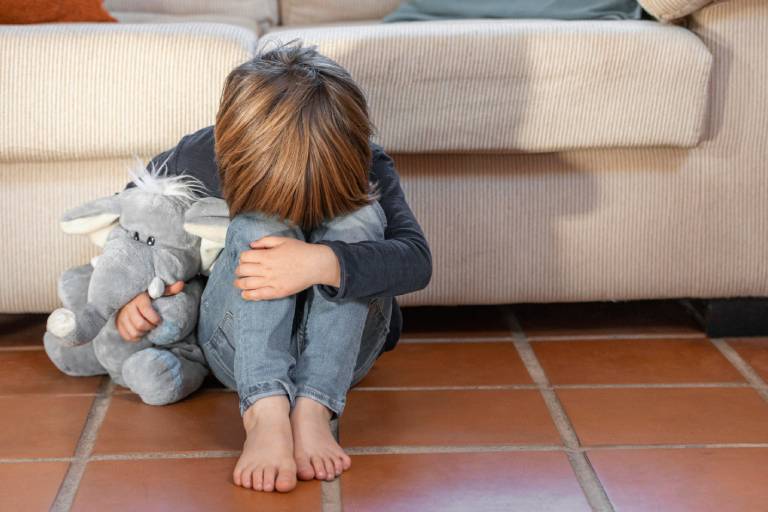Separation anxiety is most likely the most common emotional problem children and parents face, particularly in early childhood. That hugging you back in tears at school entrances, sobbing when you’re headed out to run some errands, or that repeated glancing backward to check if you’re still there, these are all telltale signs your kid is fighting separation anxiety.
As a leading pediatrician in Dubai, Dr. Olfa knows best how to support families through this separation anxiety process. If you’re losing your hair because of it, this guidebook walks you through what separation anxiety is and why it happens, and how to behave in a way that assures long-term emotional safety.
What Is Separation Anxiety and Why Does It Happen?
Separation anxiety is fear or anxiety that a child experiences when it is separated from their primary caregiver, initially a parent. As a healthy normal development, its severity and duration will be unique in every child.
In babies, separation anxiety typically begins at 8 months, is highest between 10 and 18 months, and typically resolves by 3 years of age. In other kids, though, especially kids entering school or day care, it can be long-lasting in early childhood or even adulthood.
A variety of factors may cause or initiate separation anxiety:
- Developmental milestones like starting nursery, a new house, or having a new baby
- Change of caregiver or routine
- Parental anxiety, as expected, and responded to affectively by the child
- limited history of parent separation
In our developmental pediatric article, such affective responses are understood to increase knowledge of the world. When children acquire object permanence, knowledge of things continuing to exist when they cannot be seen anymore, they learn about your absence also.
Common Symptoms of Separation Anxiety in Children
Separation anxiety is explained differently depending on your child’s age and personality. The following are some of the most widespread symptoms:
- Tantrums or sobbing, or yelling whenever you try to leave
- Holding on or refusal to leave you alone
- A headache or stomachache before school or an activity
- Nightmares at night about being lost or away from parents at night
- Obsession with your safety or their safety
- Trouble sleeping by themselves
If you’re seeing these behaviors repeatedly, you’re not alone, and there are compassionate ways to help your child feel safer and more secure.
How to Help a Child With Separation Anxiety
- Establish a Secure Goodbye Routine
Children thrive on predictability. Creating a consistent goodbye ritual can help them understand that your departure is temporary and that you’ll return.
Try this: Before leaving, give your child a warm hug, say something predictable (“I’ll be back after your lunch”), and use a comforting gesture like a kiss on the hand or a “magic” phrase. The goal is to reduce uncertainty and increase their sense of control.
This ritual also applies when you’re opening a new daycare or school. You can even do the ritual at home, during nap time, or on fast runs. See how you can learn to communicate effectively with your child.
- Have More Alone Time
Gradual exposure will be the most likely to be the most successful method to reduce separation anxiety. Start with short periods of separation, like 10 minutes away from a trusted babysitter or family member, and then lengthen them as the child becomes more confident.
If your child struggles even when you’re in another room, start by moving to a visible space and offering verbal reassurance. Over time, these small steps help children build trust and emotional resilience, key goals supported by every qualified pediatrician in Dubai.
- Stay Calm and Confident During Goodbyes
Children sense your energy and tone. If you’re uncertain, undecided, or calling back several times after leaving, they’ll be certain that and believe that it is not safe.
Leave with calm and firm even if your child is distressed. A quick and straightforward leaving communicates to them that they’ll be okay and that you trust their own ability to manage it.
It may feel difficult emotionally, but it’s a critical part of helping your child adapt.
- Avoid Sneaking Out
Leaving without saying goodbye might seem like an easy way to avoid distress, but it often backfires. When children discover you’ve disappeared, they may feel betrayed or fearful that your absence is unpredictable.
Sneaking out distresses your child and makes him or her more clingy the next time. Say goodbye, even if it means crying. This builds emotional trust, something that a concerned Dubai pediatrician like Dr. Olfa is eager to build early in your child’s life.
- Create Visual Timelines or Comfort Objects
If your child is a routine or visual one, you might be able to create a visual schedule to let them know what’s occurring if you’re leaving. You can put up pictures or drawings of each activity of the day, and when you return.
Also, transitional objects like a family picture, a little special cuddly toy, or a note in their lunch can comfort them and keep them feeling safe and close to you even when you are not with them.
- Validate Their Feelings Without Over-Reassurance
It’s important to acknowledge your child’s feelings without overexplaining or trying to fix their fear instantly. Phrases like “I know you’re feeling sad right now, and it’s okay to miss me” go much further than “You’re fine, there’s nothing to be scared of.”
Kids learn to cope when their emotions are heard and respected, rather than ignored. If you completely do not know how to handle your child in this stage of emotional tantrum, a pediatric consultation in Dubai will demonstrate to you how to set good boundaries and communicate.
- Be on the lookout for signs of Separation Anxiety Disorder
While the majority of separation anxiety is a transient and normal part of development, in a few instances, it may be an indication of an underlying, more complicated condition, referred to as Separation Anxiety Disorder (SAD).
You should visit a pediatrician if:
- Their anxiety lasts past age 6 or 7
- It is interfering with school, play, or sleep
- They have panic attacks or a severe fear of being separated
- The anxiety lasts for more than four weeks
In such cases, your pediatrician in Dubai may suggest a referral to a child psychologist or therapist to provide specialized emotional support.
When to Involve a Pediatrician?
Mild separation anxiety can often be managed at home with consistency and patience. But if you’ve tried strategies and your child continues to struggle, or if their anxiety seems excessive for their age, getting support from a trusted professional is the next best step.
Dr. Olfa, an experienced pediatrician in Dubai, is familiar with the emotional strain of working with fussy children. She counsels emotional development, problem behavior, and empathic and trust-based parenting strategies.
Don’t delay if you’re unsure if your child’s reaction is within normal development or otherwise. An early intervention can ease your child’s transition and prevent long-term habituation of anxiety.
Final Thoughts
Parenting your separation-anxious child is not easy, but it’s one of trust, resiliency, and emotional closeness. With the time passing, patience, and proper support, your child will grow increasingly secure in your leaving and sure of your return.
Is your child going into preschool or dealing with significant emotional changes? Relax, you’re not alone. Emotional independence is a process, and you don’t have to go through it alone.
Do you require professional advice or counseling?
Book an appointment with Dr. Olfa, the best pediatrician in Dubai, and take professional advice on your child’s development and emotional well-being. Allow us to make every step one notch safer for you and your child.




